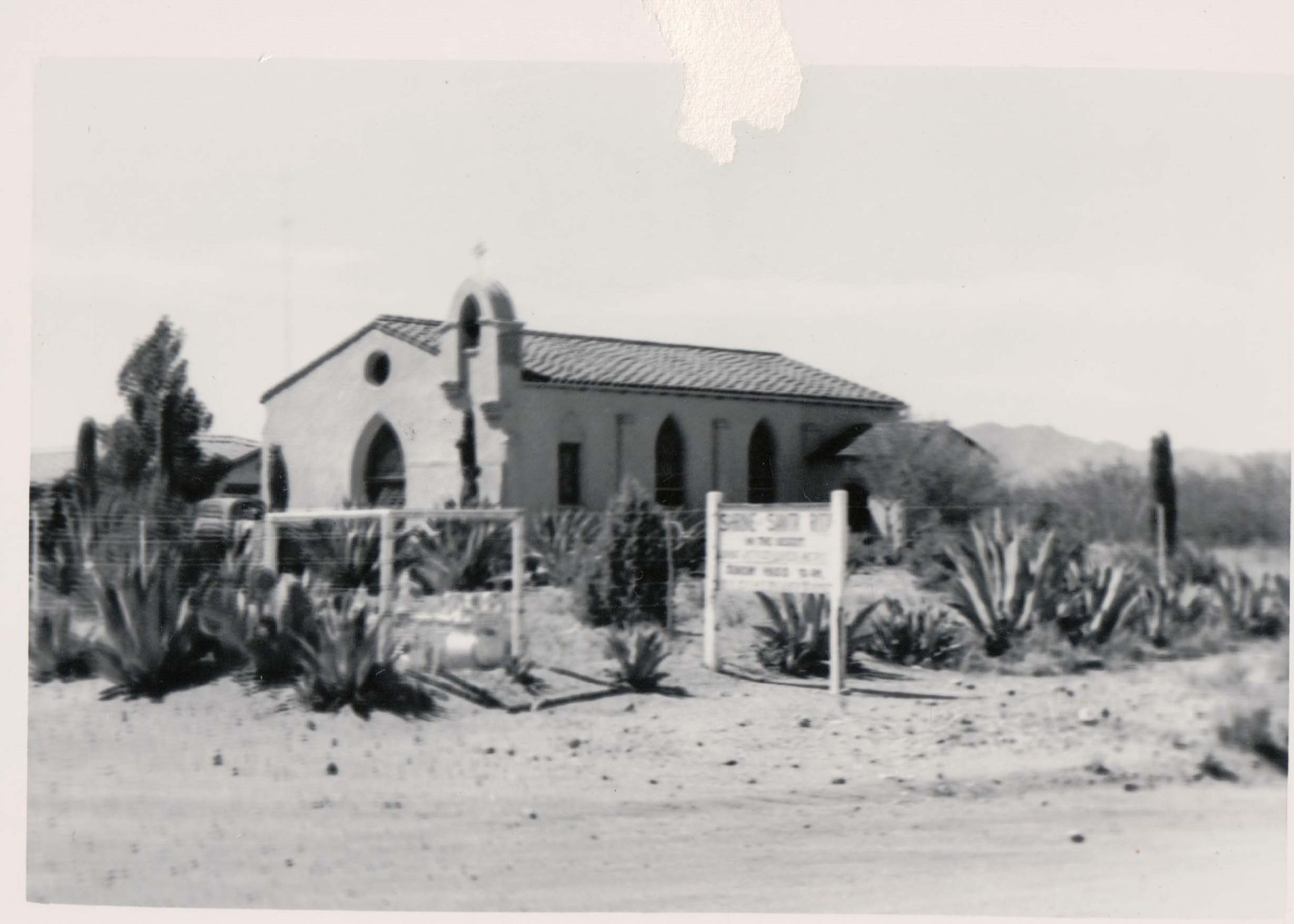VPS Newsletter
Shrine of Santa Rita in the Desert

The Shrine of Santa Rita in the Desert was built in 1935 in memory of Dr. Jokichi Takamine 5204194428 by his widow, Caroline Takamine Beach. It is the only Catholic Church in the United States built in memory of a Japanese citizen. Caroline and Jokichi spent the first years of their marriage living in Japan. Caroline had met and married Charles Beach, a Vail rancher, in 1926. Caroline had been a devout Catholic since her conversion as a young adult and wanted to provide a way for the people living in and around the small railroad/ranching community of Vail, Arizona to be able to worship. A population of about 25 lived at the town site with several hundred more scattered in a radius around the rural ranching community. They were predominantly poor Hispanic ranch hands, railroad workers and homesteaders. Caroline began at least as early as 1927 facilitating Sunday Mass in the Vail School house. She began to formulate a plan for a church that would serve the spiritual needs of the Vail area as well as be a memorial to her first husband. She and her second husband Charles began purchasing land in the area in addition to the homesteaded land to the south at the base of Mt. Fagan where their ranch operation was located. One of these purchases was at the Vail town site and would become the site for the Shrine.
The beautiful stained glass windows that are the focal point of the Shrine were the center piece around which the entire building was designed. They were purchased by Caroline Beach in 1931. They had been salvaged from the 1st United Methodist Church on 6th Avenue in Tucson, Arizona. That congregation had relocated and built a new church on Park Avenue in 1929. The 1st United Methodist Church was built in 1906. The designer and craftsman of the windows is unknown. The graceful arch of the large tripartite lancet style windows that are set into the south wall of the Shrine is incorporated throughout the entire design of the Shrine. The simplicity and gracefulness of Japanese design is felt in the symmetry and simplicity of the Shrine’s overall Mission Revival style.














